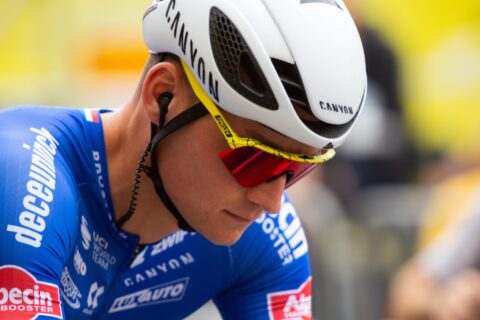
The Fundamentals of Sports Nutrition: How to Use Intuition to Improve Fueling
Data has its benefits, but only when we learn to apply an intuitive approach to our fueling can we unlock the most efficient and healthy sports nutrition habits.

Data has its benefits, but only when we learn to apply an intuitive approach to our fueling can we unlock the most efficient and healthy sports nutrition habits.

Crunching numbers is one thing, but if you want to turn data into victory, here are a few key things you should do and a few things to avoid.

HIT has many proven benefits and several big limitations. Trevor Connor explores how HIT works, its effects, and the most effective high-intensity interval workouts you can choose for specific gains.

Understanding the roles you and your child’s coach have in their athletic development can foster a healthy relationship with sports and teach beneficial life skills to take into adulthood.

Over a century of training and racing, coaches and athletes have continually experimented with the balance of volume and intensity. Today’s best practices look to maximize both a high volume of training and a small but potent dose of high-intensity work.

The timely combination of running facilities and stopwatches gave running a leg up on other endurance sports, inviting more structured training and innovation.

The early European cycling scene was convinced that more miles and more racing made champions. By the 1980s, a new generation of pros was redefining the goal and the roadmap to get there.

Coach Joe Friel recounts the relatively short history of endurance sports to identify the athletes and coaches that influenced how we train and race today.

Over his long tenure at CTS, Jim Rutberg has seen the coaching profession evolve amid an ever-growing industry. He identifies best practices for coaches, individually and collectively.

This comprehensive guide includes tips and conversation starters to help coaches walk their athletes through this digital Wild West.

Mike Norton leaned into his love of crunching numbers and applying science to differentiate his coaching services and offer more value for athletes.

Athletes who want to train and compete in multiple sports require a different approach to training, and to have their expectations managed.

Expect the emergence of artificial intelligence and new tech to accelerate potential for the business and execution of coaching.

The backstory of SWAP Running attests to the value of curiosity, naivety, and a good dose of grit. David and Megan Roche channeled their love for the sport into a coaching business with a reputation for winning.

Being a mom and an athlete can require world-class juggling and coping skills. As a coach, how can you best support and empower these athletes? We find out from Coach Alison Freeman (who’s also a Mom-Athlete).

It can be difficult for male coaches to know their role in helping female athletes navigate performance in context of the menstrual cycle and hormones. Coach Bevan McKinnon shares his experience and learning on this topic and some helpful tools.

The misconception that “lighter is better” has undermined endurance athletes of all genders, but a shocking number of female athletes have been emotionally and physiologically destroyed by weigh-ins and negative body talk. Coaches can learn how to best navigate conversations on this topic with these simple guidelines.

If you’re looking to tackle some ultra-endurance events it’s important to take a longer-term approach to your training that extends beyond a single season. We explain how and why.

As a latecomer to the competitive running scene, Cathy Utzschneider knocked out top results as a masters athlete while also coaching 75 USATF age group champions. She shares her experience on how best to remain engaged and open to what’s next.

Cathy Utzschneider took up competitive running after age 40 and quickly made up for lost time, racking up nine USATF national age group championships (including track, road, and cross-country), a silver medal at the Nike World Masters Games, and a gold medal at the North American World Regional Championships.

Coach Trevor Connor outlines how coaches and masters athletes can better address the physiology and psychology of aging in their training.